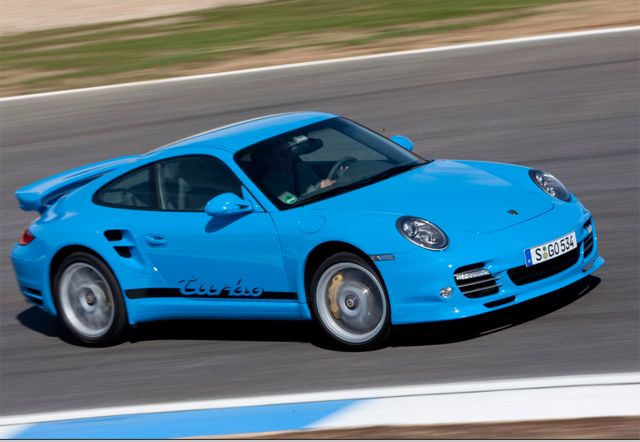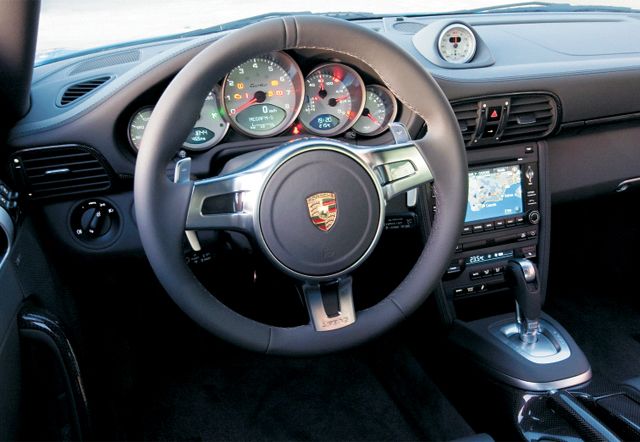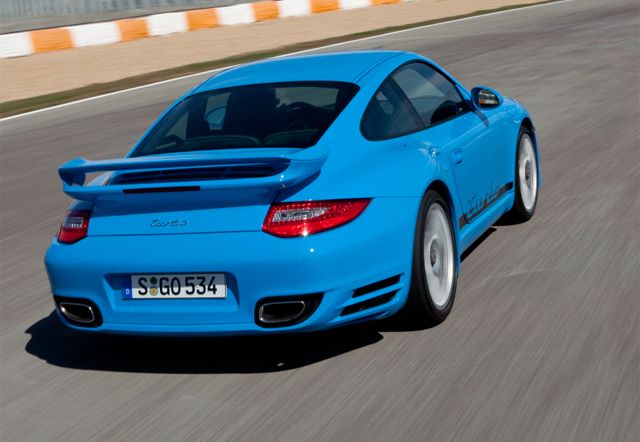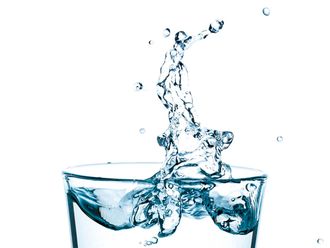I'm standing on hallowed ground. These switchback roads meandering through Lisbon's surroundings have played host to Group B rally monsters throughout the Eighties, trying their best to lure the likes of Markku Alén, Hannu Mikkola and Walter Röhrl to their deaths. Sometimes, they succeeded.
Sintra, the breathtaking, sleepy town west of Portugal's capital, is reached by a single-lane pass lined by crumbling walls and grandiose villas. Winding from the newly-built coastal highway inland towards the place, this tired strip of shredded tarmac is straight out of Rally 101.
Impossibly tight hairpins wring everything from the new Porsche 911 Turbo's turning circle. They twist their way through the lush forest towards the plains below, those that staged 1986's Rally de Portugal. The one that marked the beginning of the end of Group B. Local man Joaquim Santos ploughed into the fanatical crowd that year, his Ford RS200 taking the lives of three. And maybe fanatical is too mild a word.
"Looking back at it, I don't know how I did it. I would never be able to do it now," Röhrl begins to tell me back at base as we take a break from pounding the 911 Turbo around Estoril, the former F1 circuit. "One and a half million spectators were on the stages, and I mean not on the side of the road, I mean on the road. They would play games. If we were doing 200kph they would try to touch the car as it was coming. When we jumped the crests they would try to run underneath the flying car to the other side of the road. Crazy."
The reason I'm sitting opposite Walter ‘The Human Computer' Röhrl in Estoril's pit garage (which houses the Le Mans winning GT1 and 935 Porsches), is because I flew to the most westerly point in Europe to test drive the new 911 Turbo. I'm retracing Röhrl's Group B tracks down the stages of Rally de Portugal, as well as lapping the circuit in anger with both manual and PDK-equipped cars.
There's a lot of history here, not just with Röhrl winning in 1980, but also with Niki Lauda steering his Porsche turbo-engined McLaren F1 car to victory at the track 25 years ago. I suppose you can find Porsche history anywhere you go, the company's won so much, but this occasion is made extra special by falling almost on the day of Lauda's victory. Over the next three days I'll be following in the footsteps — or tyre marks — of two of the most famous drivers associated with Porsche. Röhrl's size 11 Adidas racing shoes will be tough to fill...
Day one
A crisp October morning in Lisbon is just the thing for a pair of turbos. The tarmac is warm, the coastal air dense — Porsche's pair of stuffers with variable turbine geometry will have a field day.
The new units function up to an exhaust temperature of 1,000 degrees Celsius, optimising air flow so that one turbo responds quickly, providing power almost from idle, while the other takes the role of a large turbocharger, acting at the top of the rev band, squeezing high-end power. In the new 911 Turbo, this means there is no lag. Not a little bit of lag, simply no lag at all. Modern force-fed engines have found many ways to reduce the dreaded turbo lag, but that's just the thing; they merely reduce it. Porsche completely cut it out of the picture. Also, instead of a blow-off valve worrying about turbo pressure, the new 3.8-litre engine features a wheel with blades that open and close accordingly, charging the pressure for optimal torque at low speeds, and opening up at high speeds for maximum power.
This seventh generation turbo flat-six is not just the most powerful with 500bhp at 6,000rpm and 650Nm from 1,950rpm (700Nm with overboost), but it's also the cleanest. Emissions are down 18 per cent and fuel consumption is improved by 16 per cent, something I was able to witness and confirm on the close-to-500km road test around Lisbon.
Also, don't assume that this 3.8-litre shares the Carrera's or GT3's block — it's entirely new, featuring direct fuel injection and dynamic engine mounts, which in layman's terms is the engine's own little suspension. The mounts adjust their stiffness to ideally balance comfort levels and sporty dynamics. The biggest proof of their efficacy is how they offset the extremely stiff and capable chassis by minimising the overall vibrations and rigid ride that are usually associated with supercars.
This 911 Turbo is unbelievably usable. When rush hour traffic catches us out near one toll gate, pottering along behind miles and miles of Seats, the PDK-fitted car I'm in behaves like any automatic you may be used to in the Middle East. And once the road opens up and starts cutting into the stony hills dotting the countryside, those clever magnetised dampers keep the engine level with the road, despite the chassis tilting to follow the transition of weight. It's super clever, and even though you quickly take them for granted, they're always doing their job, giving you a more pleasurable driving experience. And an extremely easy one at that.
Roads seemingly too narrow for Tata Nanos are no playground for the brutal mid-range acceleration of the new Turbo. The only thing Day One confirms is that the car is as driver friendly as a Camry.
Day two
The second morning starts with a carbohydrate-rich breakfast. Because that's what race drivers eat, and I'm heading for Estoril. Porsche Torque Vectoring (PTV) should help out today. It's a mechanical rear differential that variably applies brake forces to the inner wheel through corners, meaning you always make it through on the racing line.
Taking a break from the PDK, I slip into the optional carbon-fibre backed sports seats of a manual car (which are just as comfy as the plush standard items), and proceed to rev the guts out of it as I pull off down the pit lane. The clutch is surprisingly light and the biting point is early on, meaning it's actually a breeze to pull off and you can easily do hill starts without rolling. Gear changes are a bit longer and squishier than in the GT3, but again, it's all in the name of usability. Chances of you missing a gear when power-shifting with the throttle open are slim because the gate is well-spaced and gears slot in with a satisfying finishing clank. So no need to worry about a blown engine and a massive bill.
Back in the PDK, I select Sport Plus, and when you do this a light in the left spoke of the exclusive new Turbo steering wheel lights up, letting you know which mode you're in. The right spoke is reserved for the launch control light, which activates when you press the brake pedal and kick down on the throttle, which in turn builds up the revs to a desired point. Then you simply take your foot off the brake and let the PDK do the rest while you hurtle towards 100kph in 3.2 seconds. Porsche's people say it does 3.4 seconds, but they're being way too humble. And what's more, you can do this all day long. After a dozen runs, the launch control system may tell you to cool off for a couple of minutes, but afterwards, all hell's loose again. The best bit? This won't void your warranty (we're not mentioning any names, but not everyone follows Porsche's example).
Estoril is fantastic. A bit neglected, sure, but fantastic. Its flat, wide kerbs invite you to go heavy on the gas and uphill corners, calling on turbo power to catapult you through to the next bend. The main straight isn't all that long, but the flat-out final curve means an exit speed of almost 180kph (if you're a Porsche works driver) and 270kph at turn one's braking point (you'd need a Catalunya style straight for the Turbo's 312kph top speed).
So, OK, we know from that ridiculous 0-100kph time that the 911 Turbo is hella fast, but its cornering ability is just as amazing, with four-wheel drive and PTV working furiously to deliver power without shredding any of Bridgestone's finest. My driving style means they do wail a bit through the corners, but I'm trying my best to be clean. Walter Röhrl told me to. Can't argue with the man, not least because he towers over everyone else in the paddock, which is one of the reasons he never made it to F1; too tall, restricts the air intake.
Anyway, the most remarkable thing is how simple it is to extract astounding lap times from the 911 Turbo. On the first warm-up lap I'm learning the line, and on the second lap I'm nearing my limit. The rest of the day I keep shaving off hundredths of a second here and there, but the point is that my second time around Estoril was blisteringly fast. The 911 Turbo makes it as easy as hopscotch. Brake, turn, hold it, power out. Repeat.
As the sun begins to fade and the Bridgestones start blistering, I begin experiencing understeer, and then after a couple of laps, oversteer, especially out of the slower turns. This just makes things more fun since a slide in the new Turbo requires the minutest adjustment, no opposite-lock, just a straightening out of the wheel. Leave it to PVT and all-wheel drive to point you in the right direction.
Later, Porsche man Romain Dumas demonstrates what a drift machine the Turbo can be, just for kicks. But ultimate lap times come from laying the power down through all four corners of the car, and using the steering wheel as little as possible. Something all too easy in a car capable of rushing to 200kph in 11.5 seconds.
Day three
The clouds that so kindly stayed away all weekend finally loom in on Day Three, drenching Lisbon. The Turbo pootles along in traffic on the way to the airport, again confirming its status as the king of the daily-driver supercars. With the lowest displacement, the new 911 Turbo should be the underdog, but it has the highest torque in its class, the best economy, the lowest emissions and the fastest acceleration.
And Porsche has often been the underdog. A wooden shed in Austria was the start of it all. But as Röhrl, Lauda and countless others can confirm today, the tracks the company have laid down over the years are a path for all others to follow.
For me, following the legends' racing lines through Portugal evoked more than memories of late nights with Group B DVDs (I know, I'm sad). It was about remembering the old rally monsters and their immense power, which consumed its many lunatic worshippers. It was about the monster 911 evolutions generating over 500bhp from 2.1-litres of displacement. But it was also about witnessing a new breed of supercar, utterly, maddeningly fast, but, unlike the old 911s, only as frightening as an animated squirrel.
As the race 935 fires up, burbling and barking like a rabid rottweiler, Röhrl, who didn't get out of his race suit the entire trip, quips before strapping himself in, "Today's race cars are like video games. For sure, Sebastien Loeb and those guys are fantastic, but in my day, it was different."
I guess that our generation will just have to settle for what we get Mr Röhrl, and with the new 911 Turbo, it seems like we get it all.
Specs
- Model: 911 Turbo
- Engine: 3.8-litre flat six
- Transmission: Six-speed double clutch
- Max power: 500bhp @ 6,000rpm
- Max torque: 650Nm @ 1,950rpm
- Top speed: 312kph
- 0-100kph: 3.2sec
- Price: Dh488,000
- Plus: Easily the calmest Porsche to drive, stupidly fast, good value
- Minus: Not oozing with character














